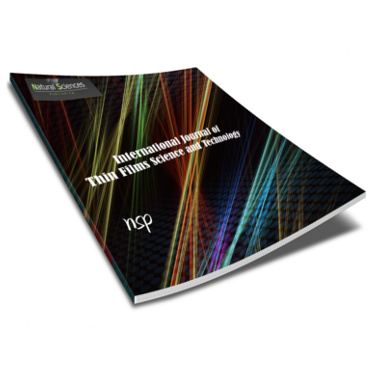International Journal of Thin Film Science and Technology

Abstract
Glasses having compositions 30P2O5 (50-x)V2O5 xB2O3 20Fe2O3 (0 ≤ x ≤ 50) mol % are prepared by the normal conventional melt quenching technique. The glassy state of the as prepared glass samples is characterized using X-ray diffraction (XRD) and differential thermal analysis (DTA). The density and molar volume of the investigated glass system decrease with increasing B2O3 contents. The room temperature (303 K) dc conductivity is typically 10-5 - 10-9 (Scm-1) with activation energy 0.30 - 0.46 (eV). Two glass transition temperatures, Tg1, and, Tg2, are detected at the DTA traces of the investigated glass system. From the dependence on heating rates of, Tg1, Tg2, and Tp, the activation energies for glass transitions, Eg1, Eg2 and for crystallization, Ec, are calculated. The values determined for Avrami exponent, n, are closed to 3 for the free B2O3 glass sample (volume nucleation, two-dimensional growth) and closed to 2 for the other investigated glass samples (volume nucleation, one-dimensional growth).
Recommended Citation
Shapaan, M.
(2016)
"DC Conductivity, Thermal Stability and Crystallization Kinetics of the Semiconducting 30P2O5 (50-x)V2O5 xB2O3 20Fe2O3 Oxide Glasses,"
International Journal of Thin Film Science and Technology: Vol. 5
:
Iss.
3
, PP -.
Available at:
https://digitalcommons.aaru.edu.jo/ijtfst/vol5/iss3/1

